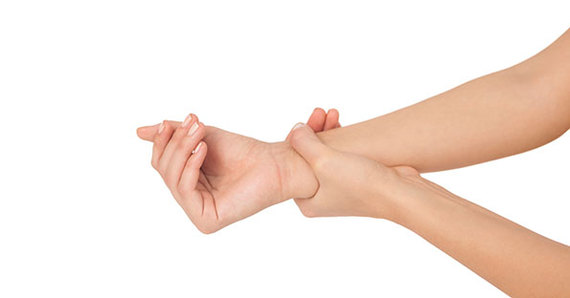It is no news that exercising and being physically fit helps to take care of one's physical and mental health. So maybe you are a gym junky trying to get fit, get your six packs on or to shed down a few sizes. Or maybe you simply do jump rope in your lawn and watch work-out videos for your routines. However, whatever your fitness goals and methodologies are, getting a broken leg or a sprained ankle is definitely not one of them.
A study from the University of Arkansas says there has been a 35 percent increase in gym injuries in recent years. A workout injury can happen to anyone, no matter your experience handling the gym equipment or your fitness level. Even walking can cause an injury.
Regardless of the severity, every injury is painful and can set you back or totally discourage you from your goals. While we may not be able to avert injuries all the time, we can learn how to treat them immediately to prevent the condition from worsening.
Let's identify some common workout injuries and how to care for them below:
1. Muscle pull
This is arguably one of the most common injuries.
A muscle pull, just as the name implies, happens when your muscle is overstretched. And this usually happens when you're tired or you use a muscle improperly, causing damages to the attaching tendons and the small blood vessels, thereby causing pain, and bleeding sometimes.
Should you experience this, immediately apply ice packs close to the blood vessels, and keep the strained muscle in a relaxed and stretched position.
You can also apply heat, but only once the swelling reduces. Drugs like Ibuprofen and Ecotrin are usually prescribed to help as painkillers and to aid one's ability to remain active.
You can also use an elastic bandage to support the injured area and reduce swelling. Keeping the injured area elevated while you're seated will also decrease the swelling. And in extreme cases, you may need braces or crutches as part of the treatment process.
2. Sprained ankle
Even though it is a common injury, it is in no way a minor injury.
Quick movements while the foot is well rooted, like in dancing, or even football causes the sprain. An ankle sprain ranges from mild to severe, depending on how many ligaments are injured and the severity of the injury. The common symptoms include pain, tenderness, and swelling. In severe cases, you may experience a tear alongside a pop or snap.
To find relief, you may need to follow the RICE procedure.
Rest. Ice. Compress. Elevate.
Rest the ankle for complete healing. Also, icing the area frequently gives relief from swelling and pain. For the first 72 hours or until swelling reduces, keep applying an ice pack for 10minutes every 2 hours during the day. An elastic compression wrap also reduces swelling, but you may need a brace if any weight is being put on it. The ankle should be elevated above the level of the heart and use of either prescription painkillers or over-the-counter pain relievers may relieve the pain.
3. Shoulder injuries
When you feel pain in your shoulder and upper-arm, it may be a sign of tendinitis, an injury that normally ensues from repetitive motions that involves swinging your arms like swimming, tennis, weightlifting etc.
When injured, use a sling for support. You can wear it for the first 48 hours after the injury so you can be more comfortable as it supports your shoulder. However, should you still feel the need to use a sling for more than 48 hours, discuss your symptoms with your doctor. Also gently massage affected area to relieve pain and boost blood flow. Do not massage the injured area if it causes pain.
4. Knee injuries
This is one of the most common injuries for runners and dancers.
Dancers commonly suffer from meniscus tears. A quick turn or twist when the foot is planted and the knee bent, like in many dance forms, can cause a torn meniscus. It can also occur while playing sports. The symptoms include knee pain, swelling and popping while the treatment procedure for a torn meniscus depends on the severity of injury with factors like the type of tear and location of the tear. You can get best knee brace for torn meniscus to aid your healing process.
Anti-inflammatory drugs like Advil and Motrin can be taken to take care of the pain and swelling. You can also apply the RICE technique here to further aid the healing process.
5. Wrist sprain
A wrist sprain is a common injury for all athletic people. All it takes is a loss of balance and a fall in a split second. While most mild wrist sprains should heal on their own, they still need time and care to heal like any other injury. To speed up the healing process, you should restrict use of the wrist, ice it periodically to reduce the pain and also use painkillers. You can try using a cast if you find it difficult to stop the use of your wrist until you see a doctor.
Bonus tips for lesser exposure to injuries and optimal workout sessions include:
•Stretch before and after any work out session. It helps to increase your flexibility and even though research is conflicting as to whether stretching helps to prevent injuries, It is still best to stretch to help you prepare your body.
•When you start a new exercise routine, start slowly, and then gradually build up the pressure. Just ease into it.
•Don't push yourself too hard. As your fitness abilities increase, you will be able to challenge yourself more.

